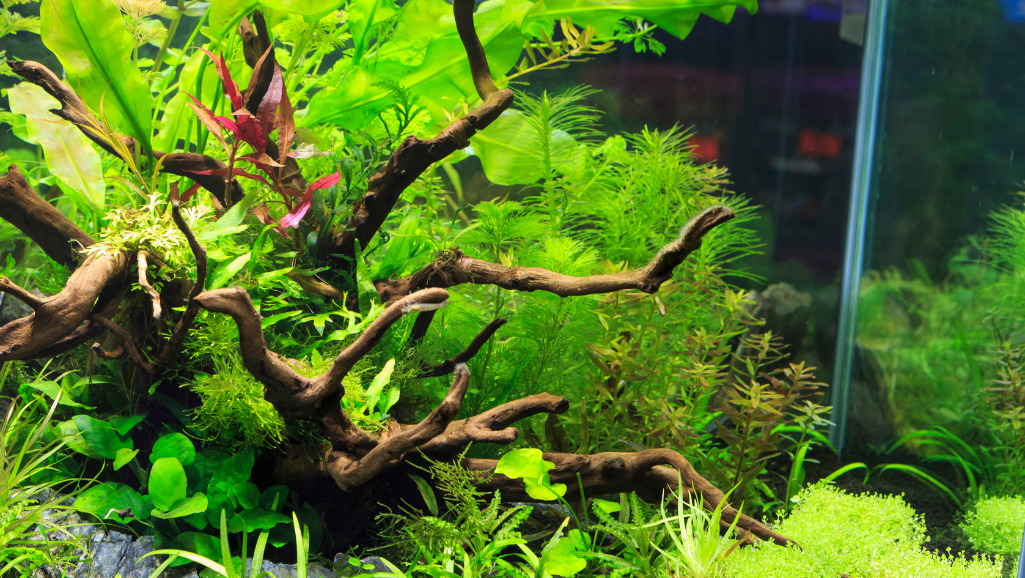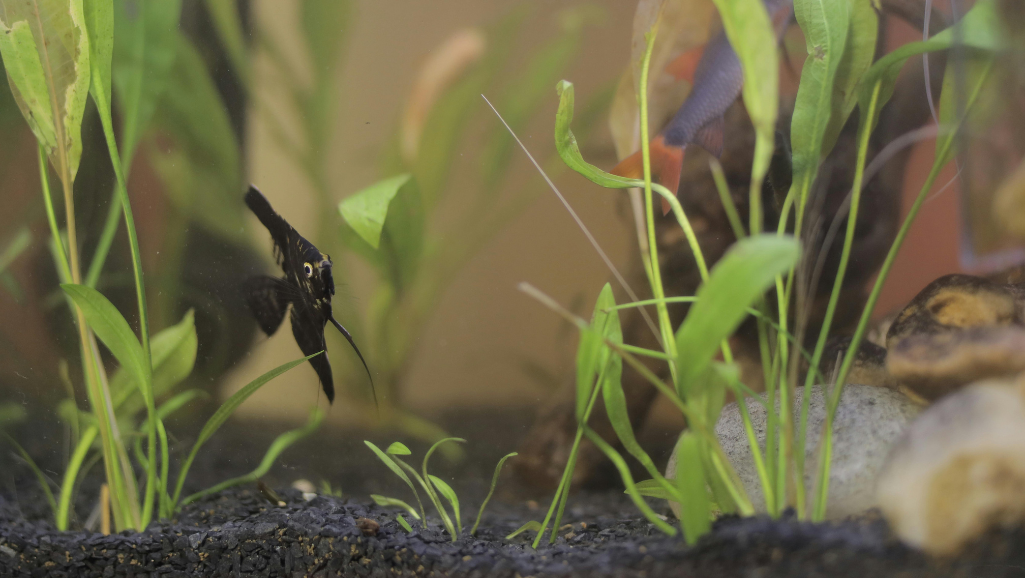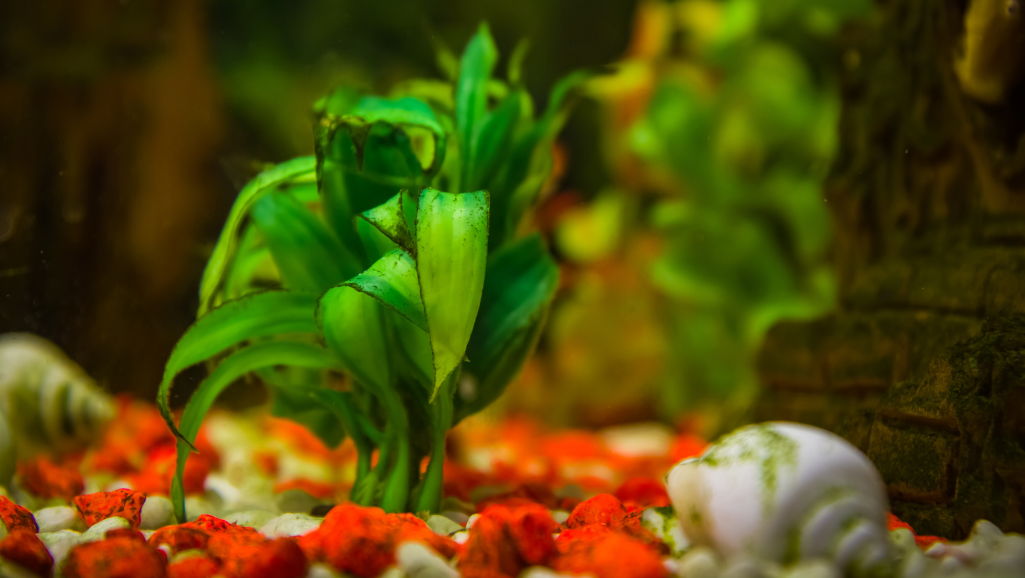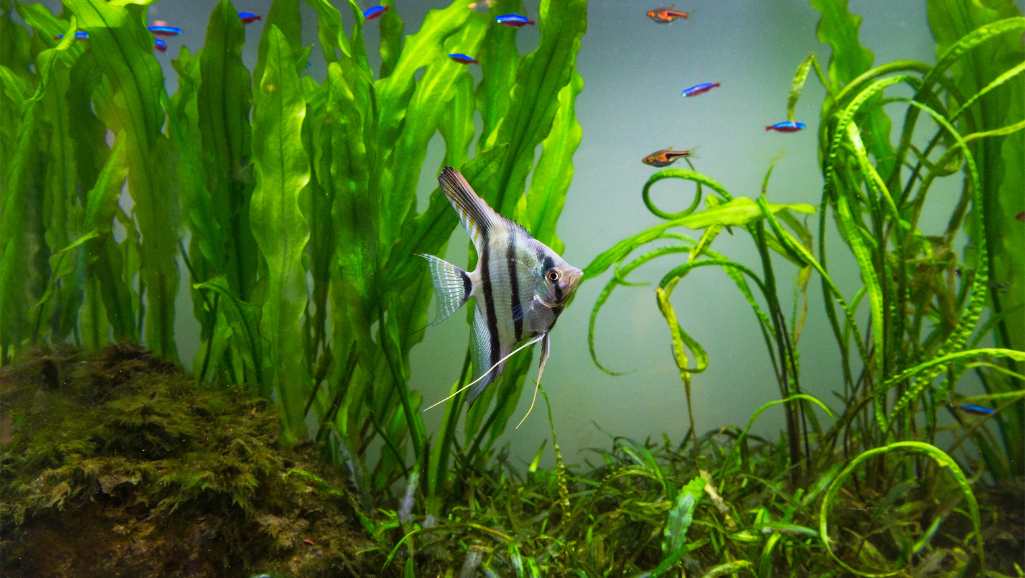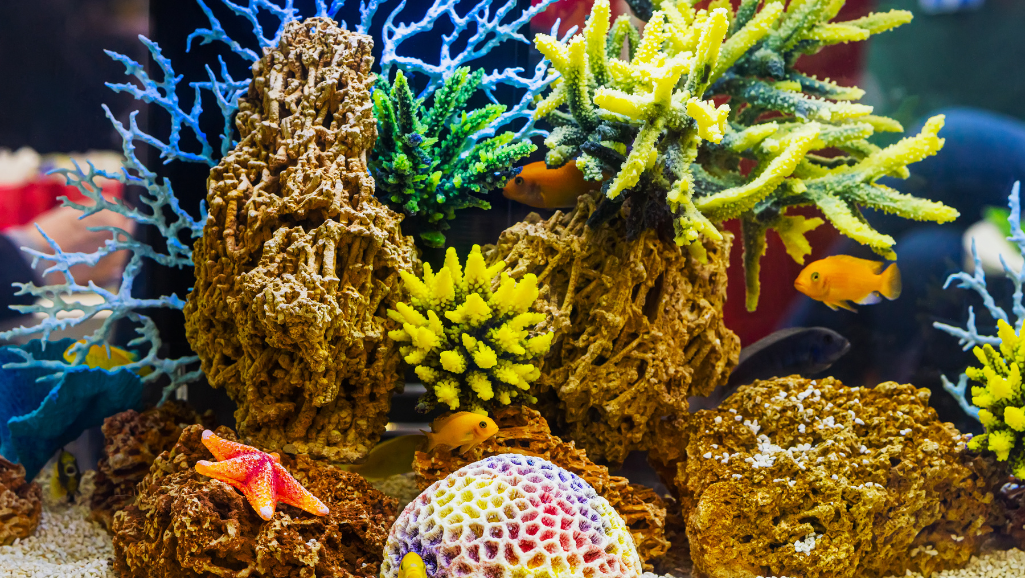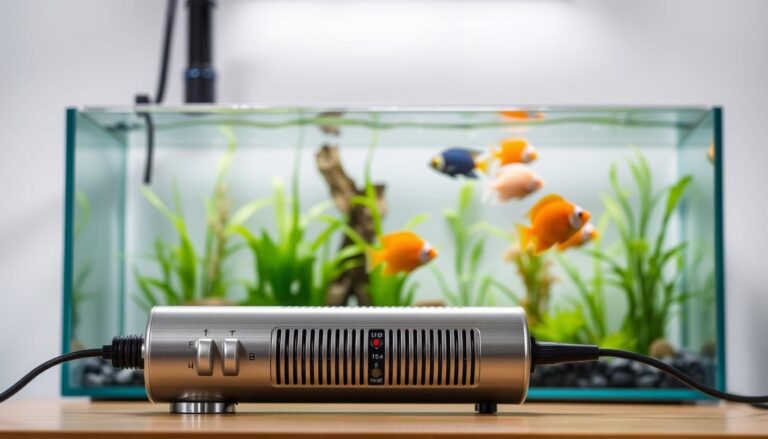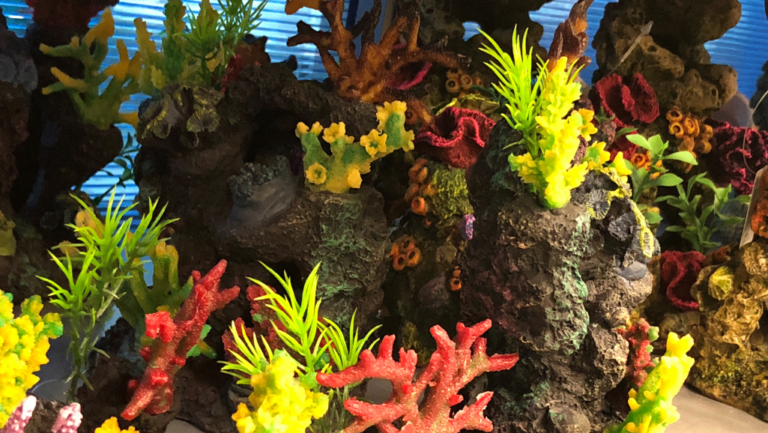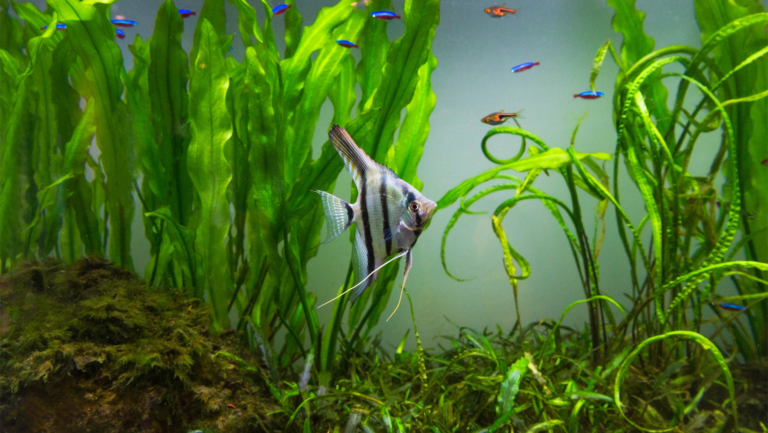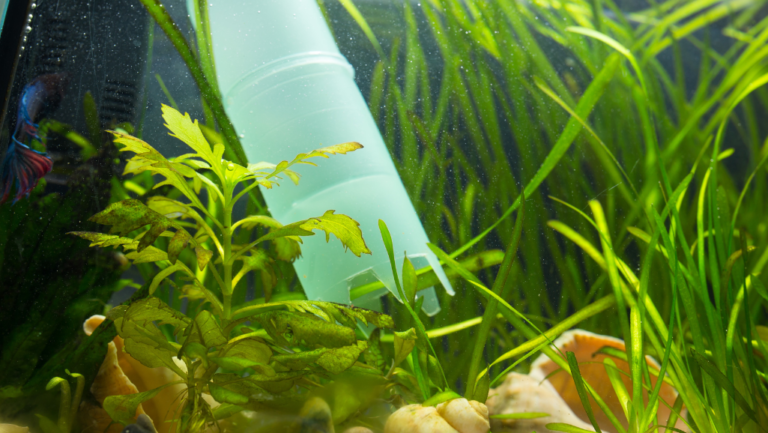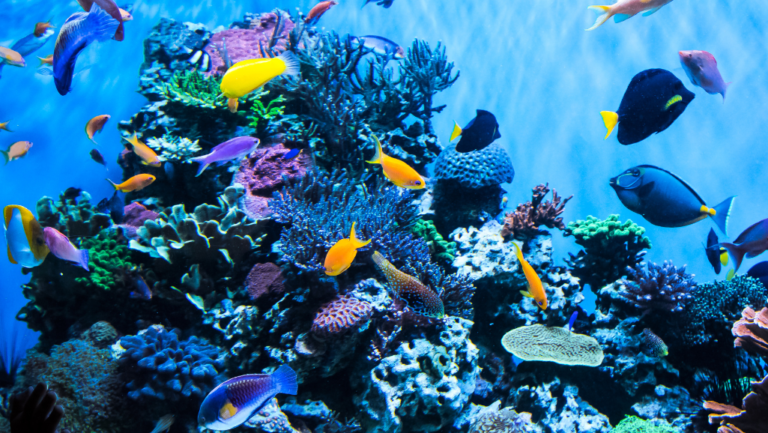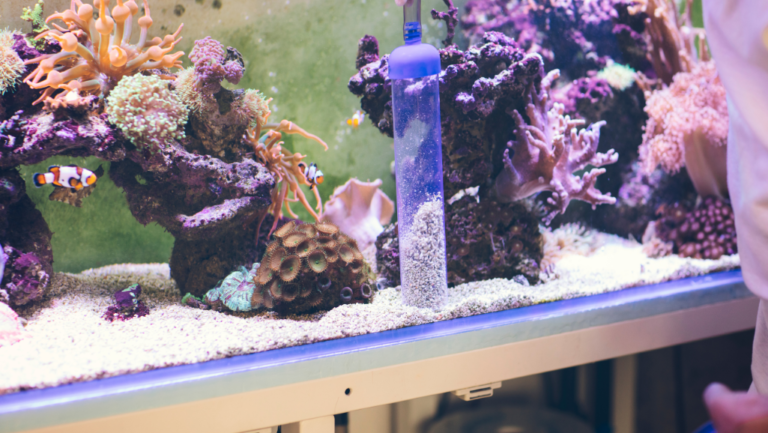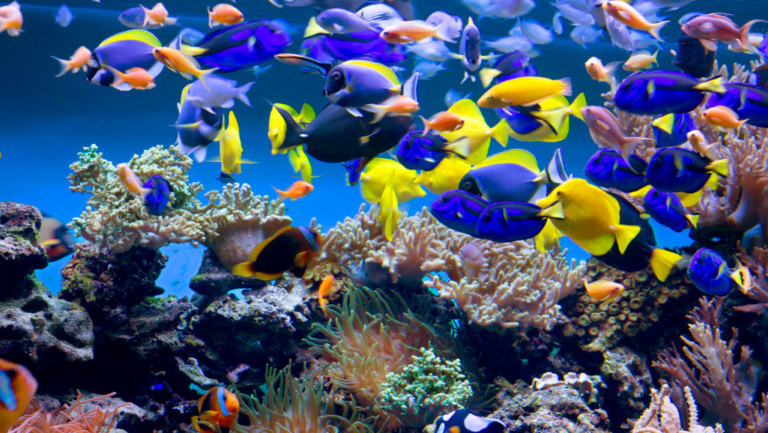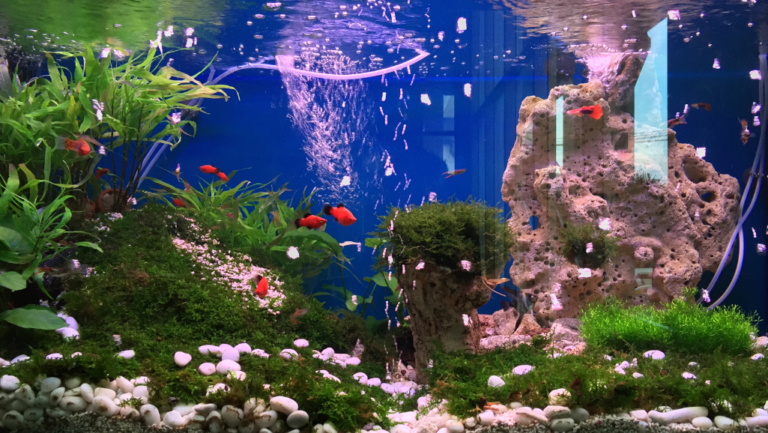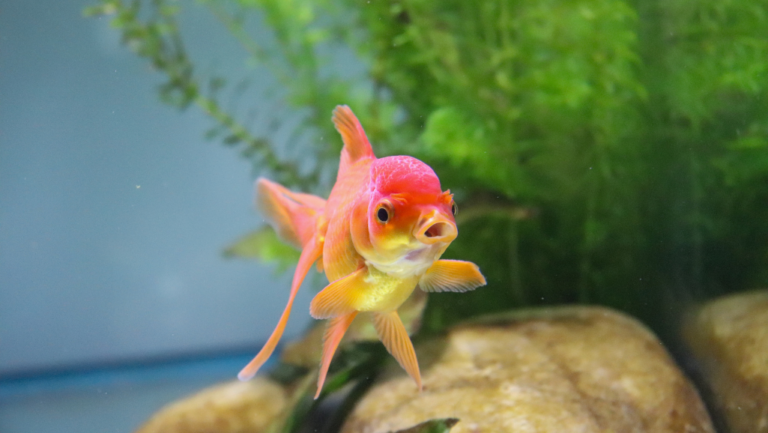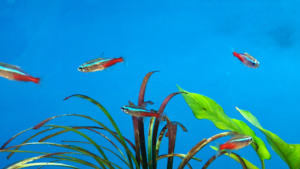Start an exciting journey into the world of planted aquariums. The right substrate is key to a thriving underwater garden. Aquarium plant soil, or aquatic plant substrate, supports plant growth and aquarium health.
Choosing the right aqua soil is critical for your planted aquarium. There are many options, from complete substrates to additives. Think about nutrient content, grain size, and plant and fish compatibility. The right substrate creates a lush, vibrant environment and a balanced ecosystem.
About 50-55% of aquarists choose aquariums with substrate for its beauty and benefits. Gravel is popular for its affordability and stability, while sand is liked for its softness and suitability for bottom-feeding fish. Soil substrates, chosen by 15-20%, enhance plant growth with their nutrients.
For a thriving planted aquarium, a 20-gallon high tank is best. It needs a power filter, heater, thermometer, LED light, and the right plants and fish. A high-quality substrate, proper pH, and enough light and nutrients create a captivating ecosystem.
Key Takeaways
- Aquarium plant soil is essential for anchoring plants, providing nutrients, and influencing water chemistry.
- Consider nutrient content, grain size, and compatibility when selecting an aquatic plant substrate.
- 50-55% of aquarists prefer aquariums with substrate for aesthetic appeal and beneficial bacteria growth.
- A 20-gallon high tank with essential equipment and carefully chosen plants and fish is recommended for a thriving planted aquarium.
- Regulate pH levels, provide adequate lighting, and supplement with nutrients for optimal plant growth and a balanced ecosystem.
Understanding Planted Aquarium Substrates
Choosing the right planted tank substrate is key for a healthy underwater garden. The substrate is more than a base for plants. It affects your aquarium’s health and looks.
What is Aquarium Substrate?
Aquarium substrate is the material at the bottom of your tank. It can be sand, gravel, or special soils for plants. It helps plants grow by providing nutrients and a place to root.
Importance of Substrate in Plant Growth
The substrate is not just for looks. It gives plants the nutrients they need to grow. Some substrates, like the walstad method, use organic soil for nutrients. Others might need extra fertilizers.
“In the gardening world, enthusiasts test soil for nutrient content, similar to aquarists testing water before choosing a substrate.”
Types of Substrates Available
There are many substrates for planted aquariums, each with its own benefits:
- Sand: Fine and compact, sand is popular but can compact and limit root growth.
- Gravel: Coarser, gravel improves water flow and oxygen for roots. It’s inert and needs extra nutrients.
- Specialized Aquarium Soils: Made for plants, these soils mix organic and mineral components for best nutrition.
- Dirted aquariums: Also known as the walstad method, this uses organic soil topped with gravel or sand. The soil is nutrient-rich, and the top layer prevents water clouding.
When picking a substrate, think about your plants, water, and the look you want. The right substrate makes your underwater garden beautiful and thriving, bringing joy for years.
Key Characteristics of Quality Substrate
Creating a thriving planted aquarium starts with the right substrate. It’s the foundation for your underwater garden. It provides nutrients, supports root growth, and helps beneficial bacteria thrive. Let’s explore what makes a great planted aquarium substrate.
Nutrient Content and Release
A quality substrate must offer and release nutrients to your plants. Substrates like ADA Aqua Soil are made to have the right mix of minerals. They slowly give out nutrients, keeping your plants well-fed.
“A nutrient-rich substrate is the secret to a thriving planted aquarium, nourishing your underwater garden from the roots up.”
Particle Size and Texture
The size and texture of your substrate are key for plant health. Smaller particles, like in Seachem Flourite, help roots grow and absorb nutrients better. These substrates also offer a lot of space for beneficial bacteria, helping your ecosystem stay balanced.
Compaction and Water Flow
A good substrate balances compaction and water flow. Too tight and roots can’t grow; too loose and plants lack support. The right compaction lets water move, bringing nutrients and oxygen to roots while keeping water fresh.
Choose a substrate that fits your plants’ needs. Some plants, like Nymphaea, need deeper substrate, while others, like Hygrophila, prefer shallower. Matching your substrate to your plants ensures a lush, vibrant aquascape.
Remember, a quality substrate is the bedrock of a successful planted aquarium. The right substrate fertilizer, with the right nutrients, size, and compaction, will make your underwater garden thrive.
Major Types of Planted Aquarium Substrates
Choosing the right substrate is key for a thriving planted aquarium. There are many types of substrates, each with its own benefits. Let’s look at the most popular ones to help you choose the best for your aquarium.
Soil-Based Substrates
Soil-based substrates, like ADA Aqua Soil and Seachem Flourite, are clay-based and rich in nutrients. They’re great for plant growth. These substrates also affect water chemistry, making it better for tropical fish and shrimp.
But, soils like ADA Aqua Soil can release ammonia at first. You’ll need to wait a couple of weeks for the water to stabilize before adding fish.
Gravel and Sand Substrates
Gravel and sand don’t change water chemistry, making them easy to handle. Gravel is a favorite for beginners because it’s affordable and comes in many styles. It’s good for bigger plants like Anubias or Swordplants.
Sand compacts well, making it easy to clean. Fine-grained sand is best for small plants like HC Cuba and fish that eat from the bottom.
Specialized Plant Substrates
Specialized substrates, like Eco-Complete and Controsoil, are made for plant health and water chemistry. They have a high Cation Exchange Capacity (CEC) to feed plant roots well. Some, like Akadama, retain water and nutrients well, thanks to their porosity and low pH.
When picking a substrate, think about grain size, nutrient content, and plant and fish compatibility. The right substrate is the first step to a healthy planted aquarium.
How to Choose the Right Substrate
Choosing the right substrate for your planted aquarium is key for your plants and fish to thrive. You have many options like aqua soil, planted tank substrate, and dirted aquarium. It’s important to think about what your aquarium needs to pick the best one.
Assessing Your Aquarium’s Needs
Think about the plants you want to grow and their needs. Some plants need a lot of nutrients and a deep substrate. Others do well with less and can get nutrients from the water. Also, consider the water chemistry your fish prefer, as some substrates can change it.
Matching Substrate with Plant Types
Each plant type needs a specific substrate. Soil-based substrates like aqua soil are great for plants that need a lot of nutrients. They also support healthy bacteria. On the other hand, inert substrates like gravel and sand are better for plants that don’t need as much and can get nutrients from fertilizers.
“Choosing the right substrate is like laying the foundation for a thriving underwater garden. It sets the stage for healthy plant growth and a vibrant aquatic ecosystem.”
Considerations for Fish Compatibility
It’s important to pick a substrate that works well with your fish. Some fish like to dig and need soft substrates like sand. Others need a certain pH level, which can be affected by the substrate. Learn about your fish’s natural habitat to ensure a healthy environment.
By carefully choosing your substrate based on your aquarium’s needs, plant types, and fish compatibility, you can create a beautiful planted aquarium. Whether you choose aqua soil, a planted tank substrate, or a dirted aquarium, the right choice will make your underwater world stunning and healthy.
Preparing Your Aquarium for Substrate
Setting up a planted aquarium starts with the right substrate. The walstad method uses enriched substrate for plant growth. This guide will help you clean, layer, and fertilize your substrate for the best results.
Cleaning and Rinsing Techniques
Cleaning your aquarium before adding substrate is key. It removes debris that can harm plants and fish. Start by washing the tank with mild soap and warm water. Rinse it several times to remove all soap.
When cleaning the substrate, use a fine-mesh sieve. Rinse it under running water until the water is clear.
Layering Substrate for Success
Layering your substrate helps plants grow better. Begin with a nutrient-rich base layer, like soil or plant substrate. Then, add an inert material like gravel or sand to prevent cloudiness.
Use about 1 pound of gravel per gallon of water. Aim for 2-3 inches (5-7.5 cm) of substrate for good root growth.
“The choice of substrate is one of the most important decisions you’ll make when setting up a planted aquarium. It can make the difference between thriving plants and a struggling ecosystem.”
Adding Fertilizers and Supplements
To enrich your substrate, add fertilizers and supplements. Substrate fertilizers, like root tabs, release nutrients directly to the roots. These can be added during setup or later as needed.
Other good options include ADA Aqua Soil and Seachem Flourite. They provide essential nutrients for plants.
Remember, a well-prepared substrate is the key to a successful planted aquarium. By cleaning, layering, and fertilizing correctly, you’ll create a great environment for your plants. This will lead to a beautiful underwater landscape.
Installation Process Steps
Setting up your planted aquarium substrate right is key for your plants to thrive. Planning and setting it up carefully will help your aquascape flourish. Let’s look at the main steps to follow.
Timing and Planning the Setup
Start by planning your aquarium setup. Think about what your plants need and the look you want. Choose the right depth and spread of your plant soil for your plants. Aim for at least 1.5 inches of soil for good root growth.
Correct Depth and Distribution
Depth is important for your substrate. Use about 1 pound of substrate per gallon of water. For a 64-liter tank, you might need:
- 2 liters of ADA Power Sand M as a base layer fertilizing substrate
- 9 liters of ADA Aqua Soil Amazonia as the general plant substrate
- 3 liters of ADA Aqua Soil Amazonia Powder as a covering layer
Spread the substrate evenly. Create gentle slopes or terraces to make your tank look interesting and support different plants.
Avoiding Common Mistakes
To avoid common mistakes, remember these tips:
- Insufficient rinsing: Rinse your substrate well to remove dust and debris that could harm your plants and fish.
- Uneven layering: Make sure the substrate depth is even across the tank. Avoid thin or bare spots that can harm plant growth.
- Rushing the process: Take your time for each step, from rinsing the substrate to planting your plants. Rushing can lead to mistakes and harm your aquascape.
“The key to a thriving planted aquarium lies in the foundation you build. Take your time, choose the right substrate, and install it with care. Your patience will be rewarded with a lush and vibrant underwater garden.”
By following these steps and avoiding common mistakes, you’ll create a stunning and healthy planted aquarium. It will showcase the beauty of aquatic plants.
Maintenance Tips for Planted Substrate
Keeping your planted aquarium healthy needs regular care. Your nutrient-rich substrate, like aqua soil, is key for plant growth. But, it also needs upkeep to work best. Here are some important tips to keep your substrate in great shape.
Regular Cleaning and Care
Use a gravel vacuum to clean your substrate during water changes. Change about 30% of the water each week. If you have a high-tech tank, change 20-25% of the water 2-3 times a week.
Also, clean your filters monthly. This removes waste that can harm your tank’s balance. Rinse the filter media every three or four months to keep it working well.
Monitoring Nutrient Levels
Watch for signs of nutrient shortages, like yellow leaves or slow growth. Aqua soil helps prevent these, but nutrients can run low. If you see these signs, add root tabs or liquid fertilizers to help your plants.
Replacing or Refreshing Substrate
Over time, your substrate might need a refresh or replacement. The life of your substrate depends on the type, plant density, and tank load. If plant health drops or algae grows, it’s time for a change.
A well-kept substrate is vital for a thriving aquarium. By following these tips and keeping an eye on your tank, your aqua soil or other substrate will support healthy plants and a lively underwater world.
VAT Number: 202531463 for Aquarium Gardens. © 2023. Newsletter subscribers are required to check their inbox to confirm subscription.
Troubleshooting Substrate Issues
Even with careful planning and upkeep, planted aquarium owners might face substrate problems. Issues like compaction, algae, and poor plant growth can occur. It’s vital to quickly spot and fix these problems to keep your tank thriving.
Identifying Compaction Problems
Compaction happens when fine particles settle and press down, blocking water flow and plant roots. Look out for stagnant spots, bad smells, and slow-growing plants. To avoid this in a dirted aquarium or with the Walstad method, pick the right substrate size and don’t overdo organic matter.
Solving Algae Growth Challenges
Too much algae can be a big problem in planted tanks. It’s often due to unbalanced nutrients, light, or CO2. To fight algae, balance nutrients, keep CO2 levels steady, and control light. Also, change the water regularly and add algae-eating fish.
“Finding the right balance of nutrients, light, and CO2 is key to preventing algae growth in planted aquariums.” – Expert Aquascaper
Overcoming Poor Plant Growth
If plants grow slowly or turn yellow, the substrate might not have enough nutrients. Enriched substrates or root tabs can help. But if the substrate doesn’t match the plants or water, it’s time to change it.
Quickly solving substrate problems keeps your planted tank healthy and beautiful. Watch water and plant health closely, and adjust as needed. This will help your aquascaping journey succeed in the long run.
Enhancing Plant Growth with Fertilizers
To make your planted aquarium thrive, using substrate fertilizers is key. Fish waste helps, but most people need more nutrients for healthy plants. Picking the right fertilizer and knowing how to use it is important.
Types of Fertilizers to Consider
There are many fertilizers for your planted aquarium. Root tabs give nutrients directly to plants with big roots. Liquid fertilizers are for the water and plants absorb them through leaves. Substrate additives can also help your soil hold more nutrients.
Application Techniques for Best Results
How you apply fertilizers matters a lot. For root tabs, place them near the roots of plants like Amazon Swords. Liquid fertilizers should be used as directed, usually 25–50 ppm nitrate for green plants. Add substrate additives to the soil before planting for even nutrient distribution.
Signs of Nutrient Deficiency to Watch For
Nutrient deficiencies can happen even with regular fertilizing. Look out for yellow leaves, slow growth, and weak roots. If you see these, you might need to change your fertilizing plan or check your water. Keeping a balance of light, CO2, and nutrients is key to stopping algae and helping plants grow.
“The vast majority of customers experience great success with Aquarium Co-Op fertilizers, which offer a beginner-friendly line of four easy-to-use products.”
Choosing the right fertilizer, using it right, and watching your plants can make your aquarium a beautiful underwater garden. It will impress all your friends.
The Role of Substrate in Aquarium Ecology
The aquatic plant substrate is key to a healthy aquarium. It helps plants grow by giving them nutrients and a place to root. But it does more than just support plants; it keeps the aquarium’s balance.
Substrate works closely with beneficial bacteria. These tiny helpers live on the substrate, breaking down waste. This keeps the water clean and your fish healthy.
Impact on Water Quality
The substrate you pick can change your aquarium’s water. Some substrates, like soil, can change pH and hardness. You need to think about your water’s needs when picking a substrate.
“A well-chosen aquarium substrate is the unsung hero of a thriving aquatic ecosystem, quietly working behind the scenes to support life and maintain balance.”
Promoting a Balanced Ecosystem
The substrate’s main job is to help your aquarium be balanced and diverse. It gives plants nutrients, hosts beneficial bacteria, and affects the water. With the right choice and care, your substrate will be the foundation of a stunning and healthy aquarium.
Inspiring Planted Aquarium Designs
Creating a stunning planted aquarium offers endless possibilities. You can go from the calm Iwagumi style to the vibrant jungle scapes. Looking at famous aquascapes by Takashi Amano can teach you a lot about aquascaping and substrate use.
The Nature Aquarium style is very popular today. It tries to bring terrestrial landscapes underwater. By using rocks, driftwood, and plants, you can make scenes that look like mountains, rainforests, or beaches. Success in this style comes from using focal points, layering, and shadow play.
Innovative Layout Ideas
When planning your aquarium, try new ideas. Use terracing and sloping for depth and interest. Your substrate, like dirted aquarium or Walstad method, can add texture and contrast.
Using Substrate for Aesthetic Appeal
Your substrate is key to your aquarium’s look. Choose one that matches your plants and hardscape for a cohesive design. A dark or bright substrate can highlight your plants and tie your aquascape together.
